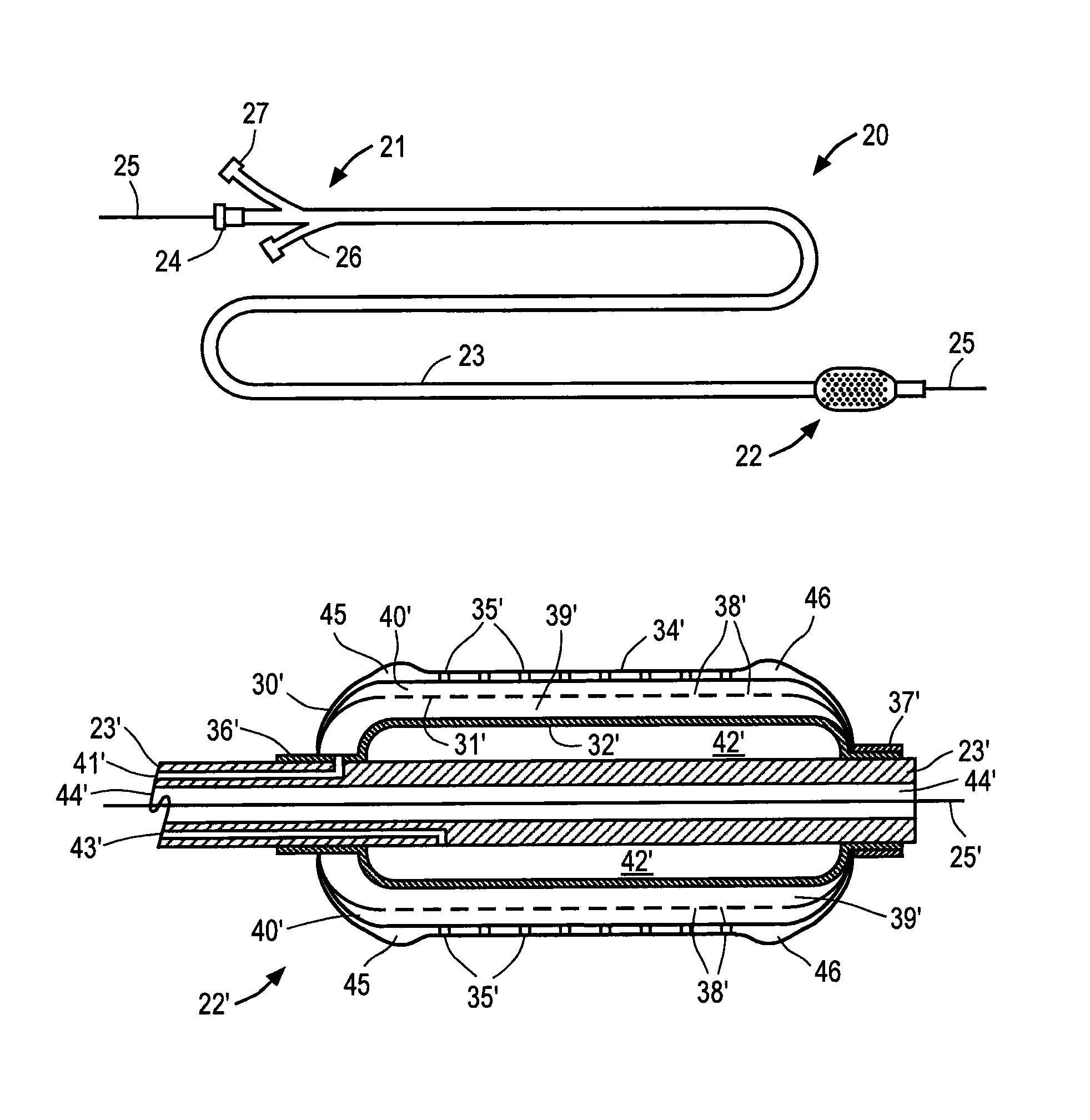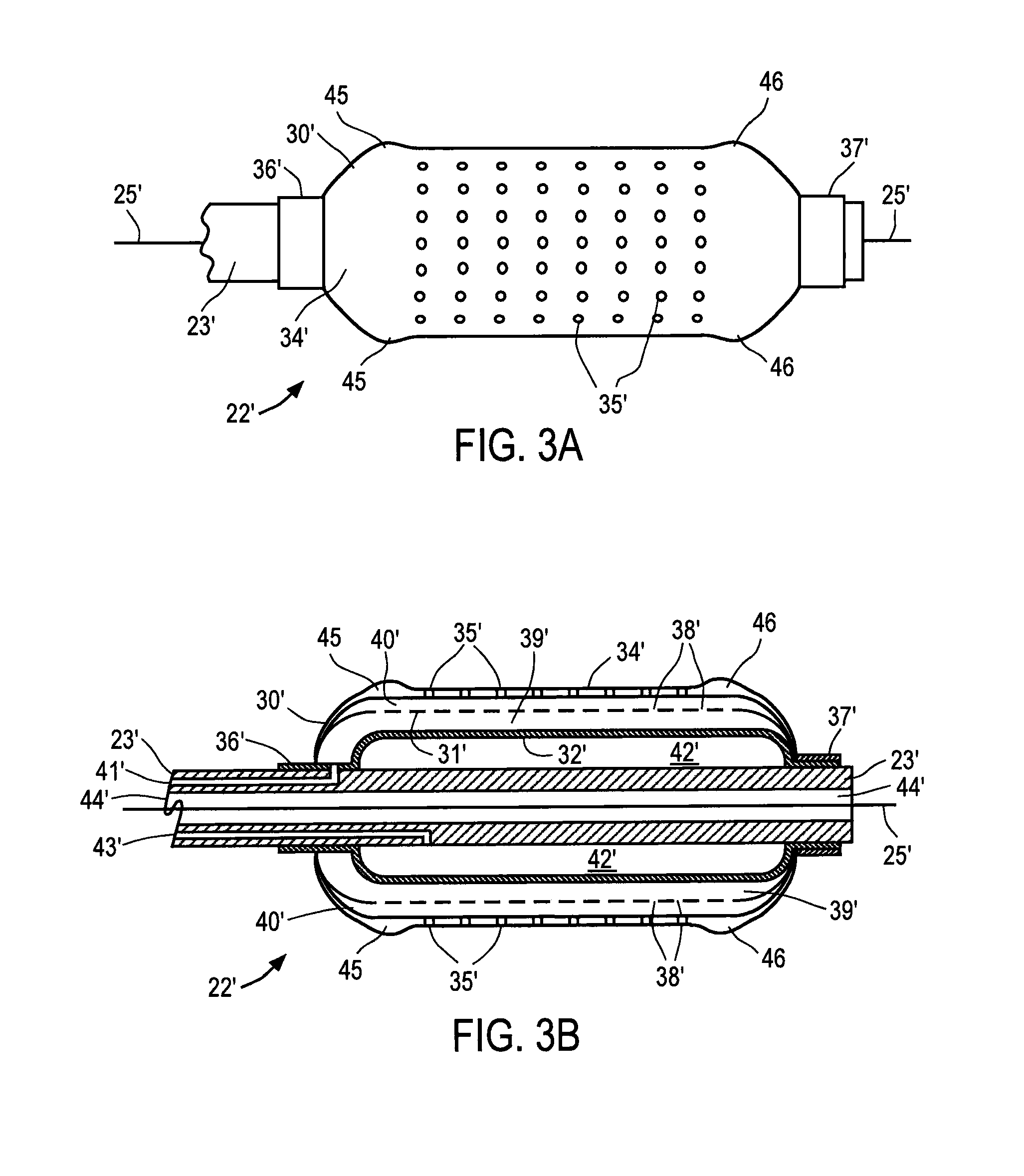Apparatus and method for delivering intraluminal therapy
a technology of intraluminal therapy and apparatus, which is applied in the field of intraluminal therapy delivery, can solve the problems of increasing the risk of morbidity, time-consuming and laborious, and the use of conventional percutaneous procedures, so as to prolong the therapeutic effect of the agent, reduce the occurrence of late-term restenosis, and reduce the washout of drugs
- Summary
- Abstract
- Description
- Claims
- Application Information
AI Technical Summary
Benefits of technology
Problems solved by technology
Method used
Image
Examples
Embodiment Construction
[0038]Referring to FIG. 1, balloon catheter 20 constructed in accordance with the principles of the present invention is described. Catheter 20 includes proximal end 21, distal region 22 and elongated shaft 23. Proximal end 21, which is manipulated by the clinician, preferably includes hemostatic port 24 that permits conventional guide wire 25 to be extended through a lumen of catheter 20, balloon inflation port 26 and infusion agent port 27. Catheter preferably has a length and diameter suitable for use in the desired cardiac or peripheral vessel, e.g., 130 to 150 cm in length with a diameter of 2.5 mm to 60 mm, in the case of an abdominal aortic or thoracic aneurysm and balloon lengths from 2 cm to 20 cm. Ports 24, 26 and 27 are conventional elements, and together with proximal end 21 of catheter 20 may comprise materials conventionally used in the construction of intravascular catheters, e.g., polyethylene or polyterephthalate. Although catheter 20 is depicted as an over-the-wire...
PUM
 Login to View More
Login to View More Abstract
Description
Claims
Application Information
 Login to View More
Login to View More - R&D
- Intellectual Property
- Life Sciences
- Materials
- Tech Scout
- Unparalleled Data Quality
- Higher Quality Content
- 60% Fewer Hallucinations
Browse by: Latest US Patents, China's latest patents, Technical Efficacy Thesaurus, Application Domain, Technology Topic, Popular Technical Reports.
© 2025 PatSnap. All rights reserved.Legal|Privacy policy|Modern Slavery Act Transparency Statement|Sitemap|About US| Contact US: help@patsnap.com



